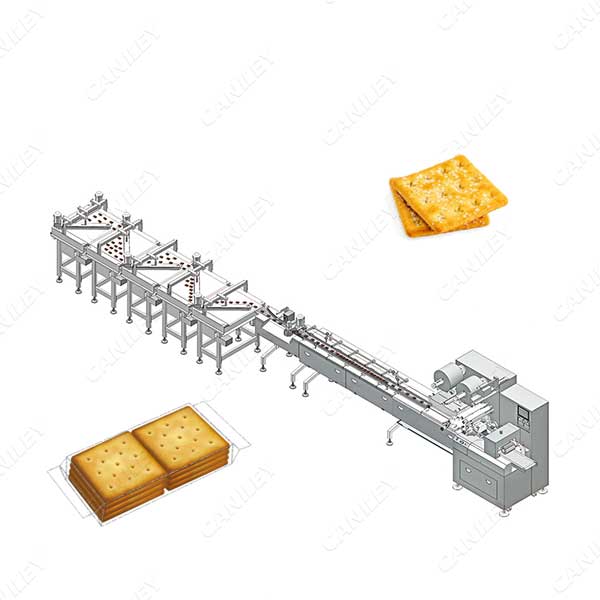The packaging of biscuits is a crucial step in the manufacturing process, ensuring the product's protection, shelf life, and attractiveness to consumers. In today's fast-paced world, automatic biscuit packaging systems have revolutionized the industry, streamlining the process and increasing efficiency. This article delves into the automatic biscuit packaging process, shedding light on its various stages and the technologies involved.

Biscuit feeding and orientation:
The first step in the automatic biscuit packaging process involves the feeding and orientation of biscuits. Biscuits are transported from the oven to the packaging line, where they are carefully aligned and separated to ensure uniformity and proper positioning for the subsequent packaging stages. Vibratory feeders or conveyor belts are commonly used in this stage to facilitate smooth and controlled movement.
Biscuit sorting and inspection: After the biscuits are oriented, they undergo sorting and inspection processes. Modern automatic systems are equipped with advanced sensors and optical devices that detect defects, such as broken biscuits or abnormal shapes. Faulty biscuits are removed from the production line to maintain the quality of the packaged product.
Biscuit stacking: To optimize space and ensure consistency in the packaging, the biscuits are stacked neatly in rows or layers. Automatic robotic arms or mechanical systems carefully arrange the biscuits, creating uniform stacks that fit the chosen package size.
Biscuit packaging: Once the biscuits are stacked, the packaging line moves on to the packing stage. Depending on the packaging requirements, biscuits may be filled into various containers, such as pouches, trays, or cartons. The filling process is precisely controlled to avoid overpacking or underpacking, ensuring that each package contains the specified number of biscuits.
Sealing and wrapping: With the biscuits successfully filled into their respective containers, the next step is sealing and wrapping.
Secondary packaging: For certain biscuit products, secondary packaging is required to group individual packages together for retail sales. Automatic systems handle the secondary packaging, which may involve placing individual packs into larger boxes or creating multipack bundles.
Quality control and inspection: Throughout the automatic packaging process, quality control and inspection play a vital role. Advanced sensors and cameras monitor various aspects of the packaging, such as seal integrity, barcode verification, and label placement. Any discrepancies or defects are promptly identified and addressed, ensuring only high-quality products reach the market.
The automatic biscuit packaging process is a marvel of modern engineering, combining precision, speed, and efficiency to bring biscuits from the oven to consumers' hands. From feeding and sorting to sealing and secondary packaging, each stage is carefully orchestrated to deliver a seamless and consistent biscuit packaging solution.





















